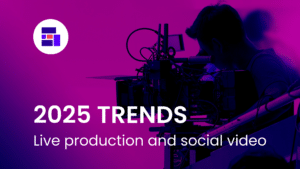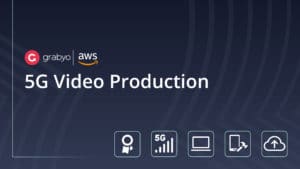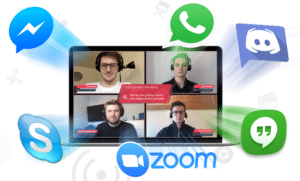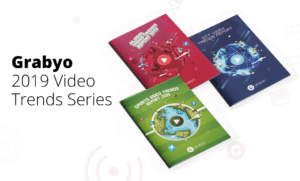Tech Trends of 2024: Three takeaways from CES
The Consumer Electronics Show (CES) takes over Las Vegas every January and aims to serve as a barometer for consumer technology trends to come each year.
For the media and broadcast industry, CES regularly serves up insights into how technology will shape how audiences access and interact with media of all formats, allowing you to shape and optimize your production and distribution strategies.
Our friends over at the DPP visited the show and produced an insightful report on their takeaways from the show. In this blog, we dive into the tech trends we believe will shape live and real-time video production. Let’s dive in!
1. Generative AI: Becoming a familiar friend
AI was one of the most prominent themes of CES 2024, but as noted in the report, there was a gap between reality and expectation.
While CES has traditionally acted as a curtain-raiser for new innovations and products, there was no obvious leap forward for AI tools or software – as noted in the DPP’s report, much of it we already knew.
The discovery we are making about generative AI is the time it will actually take to fully implement it into our workflows. The likes of ChatGPT, Microsoft Copilot (which we learned will now come hard-wired into Windows PC keyboards) and Google Bard are settling comfortably into our working lives.
However, generative AI for video and image creation is still in its infancy, although it should be noted this area is moving fast. One noteworthy French company Chat3D brought a new application that allows designers to generate 3D objects from text prompts.
This technology, along with the likes of Midjourney and DALL-E, could be moving us closer to the ability to generate creatives and graphics faster, with the help of AI. Cloud-based production platforms are well-positioned to encompass these advancements in the near future, with many already utilizing AI to streamline and enhance workflows.
For a more in-depth look at AI in video production, check out this article by Gareth Capon, Grabyo CEO.
As Gareth notes, the overarching feeling is that AI must still be implemented as human-centered. This insight from the DPP’s report sums it up:
“Despite loads of AI and an increasing number of devices – storytelling remains resolutely specialist – a niche of its own. And this may be a good thing. In a world of increasingly personalized experiences, storytelling remains universal. That is its value.”
2. TV technology: Advanced software means more media marketing
Unveiling the latest innovation in TVs is a mainstay for manufacturers at CES.
While DPP were treated to some eye-catching innovations in hardware – such as transparent micro-LED models from Samsung and LG, the most noteworthy trend for media organization lies in software.
Smart TVs, otherwise known as connected TVs or Nextgen TVs, are a common sight in most households. It is estimated 88% of US households have at least one connected TV.
One thing most Smart TV operating systems have in common is the aggregation of streaming apps and media providers. The ‘home screen’ of any Smart TV is filled to the brim with content promotion from a range of platforms.
It is a competitive arena, and one that means any content provider has lots of noise and distractions to cut through.
The solution that presents itself, is to double down on marketing efforts across all channels. The connected ecosystem of video consumption takes place across many screens and platforms, with opportunities for advertising and marketing across digital, social and linear broadcast.
Media organizations must create multiple touchpoints with their live and on-demand content and promotion across every channel available. Grabyo is helping media organizations to achieve this already, using tactics such as real-time highlights distribution to social and digital platforms, as well as alternate broadcasting to FAST, OTT and YouTube channels to monetize live content even further.
Is it also noted in the DPP’s report that surprisingly, traditional TV ad spend has increased since 2020, but the general shift towards digital advertising spend remains in place.
3. Software looks back at hardware
Our last CES 2024 trend straddles both consumer and business technology. Innovation in software is outpacing that of hardware.
Consumers have grown used to the idea that the software in our personal devices will continually improve, adding new features and capabilities without added cost, even when we don’t own the latest model.
Much of the fanfare at CES centered around powerful software with AI enhancements and better quality of life for users.
Business tools are increasingly taking lessons from consumer technology by putting the user experience at the heart of everything. In live video production, this is also the case. Cloud production platforms offer the same benefits, removing forced upgrade cycles and continuously adding value to users.
The agile nature of cloud production also allows media organizations to keep pace with changing trends in consumption. Offering personalized, localized experiences for global audiences is becoming more prevalent each year, as documented by CES. The scope and cost of delivering these experiences without cloud technology has been a barrier to entry until now.

















































